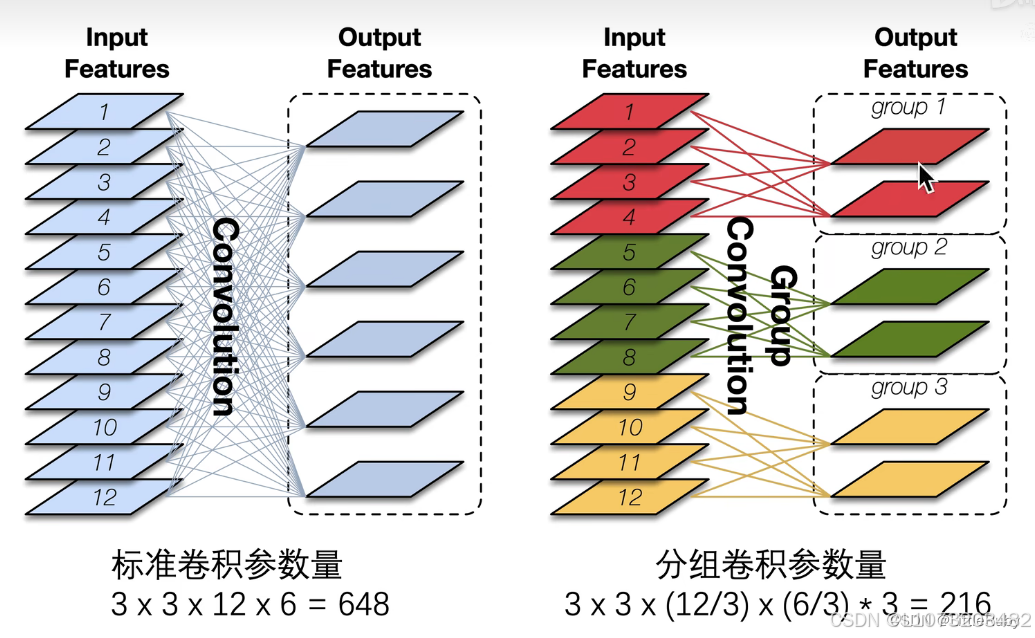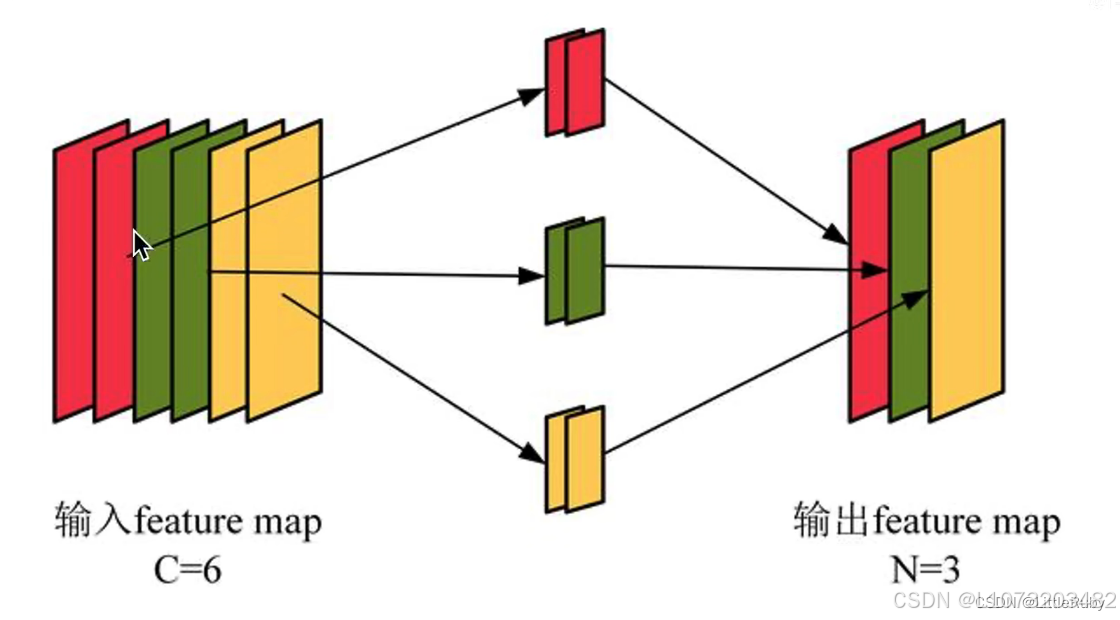- 🍨 本文为🔗365天深度学习训练营 中的学习记录博客
- 🍖 原作者:K同学啊 | 接辅导、项目定制
一、我的环境
1.语言环境:Python 3.9
2.编译器:Pycharm
3.深度学习环境:pytorch
二、GPU设置
# 设置GPU
device = torch.device("cuda" if torch.cuda.is_available() else "cpu")三、数据导入
import pathlib
import torch
import torch.nn as nn
import torch.nn.functional as F
from torchvision import transforms, datasets
device = torch.device("cuda" if torch.cuda.is_available() else "cpu")
print(device)
data_dir = './data/'
data_dir = pathlib.Path(data_dir)
data_paths = list(data_dir.glob('*'))
classeNames = [str(path).split("\\")[1] for path in data_paths]
print(classeNames)
image_count = len(list(data_dir.glob('*/*')))
print("图片总数为:", image_count)
['Monkeypox', 'Others']
图片总数为: 2142四、加载数据
batch_size = 32
train_dl = torch.utils.data.DataLoader(train_dataset,
batch_size=batch_size,
shuffle=True,
num_workers=0)
test_dl = torch.utils.data.DataLoader(test_dataset,
batch_size=batch_size,
shuffle=True,
num_workers=0)五、数据处理
train_transforms = transforms.Compose([
transforms.Resize([224, 224]), # 将输入图片resize成统一尺寸
# transforms.RandomHorizontalFlip(), # 随机水平翻转
transforms.ToTensor(), # 将PIL Image或numpy.ndarray转换为tensor,并归一化到[0,1]之间
transforms.Normalize( # 标准化处理-->转换为标准正太分布(高斯分布),使模型更容易收敛
mean=[0.485, 0.456, 0.406],
std=[0.229, 0.224, 0.225]) # 其中 mean=[0.485,0.456,0.406]与std=[0.229,0.224,0.225] 从数据集中随机抽样计算得到的。
])
test_transform = transforms.Compose([
transforms.Resize([224, 224]), # 将输入图片resize成统一尺寸
transforms.ToTensor(), # 将PIL Image或numpy.ndarray转换为tensor,并归一化到[0,1]之间
transforms.Normalize( # 标准化处理-->转换为标准正太分布(高斯分布),使模型更容易收敛
mean=[0.485, 0.456, 0.406],
std=[0.229, 0.224, 0.225]) # 其中 mean=[0.485,0.456,0.406]与std=[0.229,0.224,0.225] 从数据集中随机抽样计算得到的。
])#划分数据集
train_size = int(0.8 * len(total_data)) # train_size表示训练集大小,通过将总体数据长度的80%转换为整数得到;
test_size = len(total_data) - train_size # test_size表示测试集大小,是总体数据长度减去训练集大小。
# 使用torch.utils.data.random_split()方法进行数据集划分。该方法将总体数据total_data按照指定的大小比例([train_size, test_size])随机划分为训练集和测试集,
# 并将划分结果分别赋值给train_dataset和test_dataset两个变量。
train_ds, test_ds = random_split(total_data, [train_size, test_size])数据可视化
plt.figure(figsize=(16, 10))
# plt.title("数据集")
for i in range(20):
plt.subplot(4, 5, i + 1)
plt.axis("off")
image = random.choice(img_list)
label_name = image.parts[-2]
plt.title(label_name)
plt.imshow(Image.open(str(image)))
plt.show()
再次检查数据
for X, y in test_dl:
print("Shape of X [N, C, H, W]:", X.shape)
print("Shape of y:", y.shape, y.dtype)
break六、构建模型
class BN_Conv2d(nn.Module):
"""
BN_CONV_RELU
"""
def __init__(self, in_channels, out_channels, kernel_size, stride, padding, dilation=1, groups=1, bias=False):
super(BN_Conv2d, self).__init__()
self.seq = nn.Sequential(
nn.Conv2d(in_channels, out_channels, kernel_size=kernel_size, stride=stride,
padding=padding, dilation=dilation, groups=groups, bias=bias),
nn.BatchNorm2d(out_channels)
)
def forward(self, x):
return F.relu(self.seq(x))
class ResNeXt_Block(nn.Module):
"""
ResNeXt block with group convolutions
"""
def __init__(self, in_chnls, cardinality, group_depth, stride):
super(ResNeXt_Block, self).__init__()
self.group_chnls = cardinality * group_depth
self.conv1 = BN_Conv2d(in_chnls, self.group_chnls, 1, stride=1, padding=0)
self.conv2 = BN_Conv2d(self.group_chnls, self.group_chnls, 3, stride=stride, padding=1, groups=cardinality)
self.conv3 = nn.Conv2d(self.group_chnls, self.group_chnls * 2, 1, stride=1, padding=0)
self.bn = nn.BatchNorm2d(self.group_chnls * 2)
self.short_cut = nn.Sequential(
nn.Conv2d(in_chnls, self.group_chnls * 2, 1, stride, 0, bias=False),
nn.BatchNorm2d(self.group_chnls * 2)
)
def forward(self, x):
out = self.conv1(x)
out = self.conv2(out)
out = self.bn(self.conv3(out))
out += self.short_cut(x)
return F.relu(out)
class ResNeXt(nn.Module):
"""
ResNeXt builder
"""
def __init__(self, layers: object, cardinality, group_depth, num_classes) -> object:
super(ResNeXt, self).__init__()
self.cardinality = cardinality
self.channels = 64
self.conv1 = BN_Conv2d(3, self.channels, 7, stride=2, padding=3)
d1 = group_depth
self.conv2 = self.___make_layers(d1, layers[0], stride=1)
d2 = d1 * 2
self.conv3 = self.___make_layers(d2, layers[1], stride=2)
d3 = d2 * 2
self.conv4 = self.___make_layers(d3, layers[2], stride=2)
d4 = d3 * 2
self.conv5 = self.___make_layers(d4, layers[3], stride=2)
self.fc = nn.Linear(self.channels, num_classes) # 224x224 input size
def ___make_layers(self, d, blocks, stride):
strides = [stride] + [1] * (blocks - 1)
layers = []
for stride in strides:
layers.append(ResNeXt_Block(self.channels, self.cardinality, d, stride))
self.channels = self.cardinality * d * 2
return nn.Sequential(*layers)
def forward(self, x):
out = self.conv1(x)
out = F.max_pool2d(out, 3, 2, 1)
out = self.conv2(out)
out = self.conv3(out)
out = self.conv4(out)
out = self.conv5(out)
out = F.avg_pool2d(out, 7)
out = out.view(out.size(0), -1)
out = F.softmax(self.fc(out), dim=1)
return out
model = ResNeXt([3, 4, 6, 3], 32, 4, 4)
model.to(device)----------------------------------------------------------------
Layer (type) Output Shape Param #
================================================================
Conv2d-1 [-1, 64, 112, 112] 9,408
BatchNorm2d-2 [-1, 64, 112, 112] 128
BN_Conv2d-3 [-1, 64, 112, 112] 0
Conv2d-4 [-1, 128, 56, 56] 8,192
BatchNorm2d-5 [-1, 128, 56, 56] 256
BN_Conv2d-6 [-1, 128, 56, 56] 0
Conv2d-7 [-1, 128, 56, 56] 4,608
BatchNorm2d-8 [-1, 128, 56, 56] 256
BN_Conv2d-9 [-1, 128, 56, 56] 0
Conv2d-10 [-1, 256, 56, 56] 33,024
BatchNorm2d-11 [-1, 256, 56, 56] 512
Conv2d-12 [-1, 256, 56, 56] 16,384
BatchNorm2d-13 [-1, 256, 56, 56] 512
ResNeXt_Block-14 [-1, 256, 56, 56] 0
Conv2d-15 [-1, 128, 56, 56] 32,768
BatchNorm2d-16 [-1, 128, 56, 56] 256
BN_Conv2d-17 [-1, 128, 56, 56] 0
Conv2d-18 [-1, 128, 56, 56] 4,608
BatchNorm2d-19 [-1, 128, 56, 56] 256
BN_Conv2d-20 [-1, 128, 56, 56] 0
Conv2d-21 [-1, 256, 56, 56] 33,024
BatchNorm2d-22 [-1, 256, 56, 56] 512
Conv2d-23 [-1, 256, 56, 56] 65,536
BatchNorm2d-24 [-1, 256, 56, 56] 512
ResNeXt_Block-25 [-1, 256, 56, 56] 0
Conv2d-26 [-1, 128, 56, 56] 32,768
BatchNorm2d-27 [-1, 128, 56, 56] 256
BN_Conv2d-28 [-1, 128, 56, 56] 0
Conv2d-29 [-1, 128, 56, 56] 4,608
BatchNorm2d-30 [-1, 128, 56, 56] 256
BN_Conv2d-31 [-1, 128, 56, 56] 0
Conv2d-32 [-1, 256, 56, 56] 33,024
BatchNorm2d-33 [-1, 256, 56, 56] 512
Conv2d-34 [-1, 256, 56, 56] 65,536
BatchNorm2d-35 [-1, 256, 56, 56] 512
ResNeXt_Block-36 [-1, 256, 56, 56] 0
Conv2d-37 [-1, 256, 56, 56] 65,536
BatchNorm2d-38 [-1, 256, 56, 56] 512
BN_Conv2d-39 [-1, 256, 56, 56] 0
Conv2d-40 [-1, 256, 28, 28] 18,432
BatchNorm2d-41 [-1, 256, 28, 28] 512
BN_Conv2d-42 [-1, 256, 28, 28] 0
Conv2d-43 [-1, 512, 28, 28] 131,584
BatchNorm2d-44 [-1, 512, 28, 28] 1,024
Conv2d-45 [-1, 512, 28, 28] 131,072
BatchNorm2d-46 [-1, 512, 28, 28] 1,024
ResNeXt_Block-47 [-1, 512, 28, 28] 0
Conv2d-48 [-1, 256, 28, 28] 131,072
BatchNorm2d-49 [-1, 256, 28, 28] 512
BN_Conv2d-50 [-1, 256, 28, 28] 0
Conv2d-51 [-1, 256, 28, 28] 18,432
BatchNorm2d-52 [-1, 256, 28, 28] 512
BN_Conv2d-53 [-1, 256, 28, 28] 0
Conv2d-54 [-1, 512, 28, 28] 131,584
BatchNorm2d-55 [-1, 512, 28, 28] 1,024
Conv2d-56 [-1, 512, 28, 28] 262,144
BatchNorm2d-57 [-1, 512, 28, 28] 1,024
ResNeXt_Block-58 [-1, 512, 28, 28] 0
Conv2d-59 [-1, 256, 28, 28] 131,072
BatchNorm2d-60 [-1, 256, 28, 28] 512
BN_Conv2d-61 [-1, 256, 28, 28] 0
Conv2d-62 [-1, 256, 28, 28] 18,432
BatchNorm2d-63 [-1, 256, 28, 28] 512
BN_Conv2d-64 [-1, 256, 28, 28] 0
Conv2d-65 [-1, 512, 28, 28] 131,584
BatchNorm2d-66 [-1, 512, 28, 28] 1,024
Conv2d-67 [-1, 512, 28, 28] 262,144
BatchNorm2d-68 [-1, 512, 28, 28] 1,024
ResNeXt_Block-69 [-1, 512, 28, 28] 0
Conv2d-70 [-1, 256, 28, 28] 131,072
BatchNorm2d-71 [-1, 256, 28, 28] 512
BN_Conv2d-72 [-1, 256, 28, 28] 0
Conv2d-73 [-1, 256, 28, 28] 18,432
BatchNorm2d-74 [-1, 256, 28, 28] 512
BN_Conv2d-75 [-1, 256, 28, 28] 0
Conv2d-76 [-1, 512, 28, 28] 131,584
BatchNorm2d-77 [-1, 512, 28, 28] 1,024
Conv2d-78 [-1, 512, 28, 28] 262,144
BatchNorm2d-79 [-1, 512, 28, 28] 1,024
ResNeXt_Block-80 [-1, 512, 28, 28] 0
Conv2d-81 [-1, 512, 28, 28] 262,144
BatchNorm2d-82 [-1, 512, 28, 28] 1,024
BN_Conv2d-83 [-1, 512, 28, 28] 0
Conv2d-84 [-1, 512, 14, 14] 73,728
BatchNorm2d-85 [-1, 512, 14, 14] 1,024
BN_Conv2d-86 [-1, 512, 14, 14] 0
Conv2d-87 [-1, 1024, 14, 14] 525,312
BatchNorm2d-88 [-1, 1024, 14, 14] 2,048
Conv2d-89 [-1, 1024, 14, 14] 524,288
BatchNorm2d-90 [-1, 1024, 14, 14] 2,048
ResNeXt_Block-91 [-1, 1024, 14, 14] 0
Conv2d-92 [-1, 512, 14, 14] 524,288
BatchNorm2d-93 [-1, 512, 14, 14] 1,024
BN_Conv2d-94 [-1, 512, 14, 14] 0
Conv2d-95 [-1, 512, 14, 14] 73,728
BatchNorm2d-96 [-1, 512, 14, 14] 1,024
BN_Conv2d-97 [-1, 512, 14, 14] 0
Conv2d-98 [-1, 1024, 14, 14] 525,312
BatchNorm2d-99 [-1, 1024, 14, 14] 2,048
Conv2d-100 [-1, 1024, 14, 14] 1,048,576
BatchNorm2d-101 [-1, 1024, 14, 14] 2,048
ResNeXt_Block-102 [-1, 1024, 14, 14] 0
Conv2d-103 [-1, 512, 14, 14] 524,288
BatchNorm2d-104 [-1, 512, 14, 14] 1,024
BN_Conv2d-105 [-1, 512, 14, 14] 0
Conv2d-106 [-1, 512, 14, 14] 73,728
BatchNorm2d-107 [-1, 512, 14, 14] 1,024
BN_Conv2d-108 [-1, 512, 14, 14] 0
Conv2d-109 [-1, 1024, 14, 14] 525,312
BatchNorm2d-110 [-1, 1024, 14, 14] 2,048
Conv2d-111 [-1, 1024, 14, 14] 1,048,576
BatchNorm2d-112 [-1, 1024, 14, 14] 2,048
ResNeXt_Block-113 [-1, 1024, 14, 14] 0
Conv2d-114 [-1, 512, 14, 14] 524,288
BatchNorm2d-115 [-1, 512, 14, 14] 1,024
BN_Conv2d-116 [-1, 512, 14, 14] 0
Conv2d-117 [-1, 512, 14, 14] 73,728
BatchNorm2d-118 [-1, 512, 14, 14] 1,024
BN_Conv2d-119 [-1, 512, 14, 14] 0
Conv2d-120 [-1, 1024, 14, 14] 525,312
BatchNorm2d-121 [-1, 1024, 14, 14] 2,048
Conv2d-122 [-1, 1024, 14, 14] 1,048,576
BatchNorm2d-123 [-1, 1024, 14, 14] 2,048
ResNeXt_Block-124 [-1, 1024, 14, 14] 0
Conv2d-125 [-1, 512, 14, 14] 524,288
BatchNorm2d-126 [-1, 512, 14, 14] 1,024
BN_Conv2d-127 [-1, 512, 14, 14] 0
Conv2d-128 [-1, 512, 14, 14] 73,728
BatchNorm2d-129 [-1, 512, 14, 14] 1,024
BN_Conv2d-130 [-1, 512, 14, 14] 0
Conv2d-131 [-1, 1024, 14, 14] 525,312
BatchNorm2d-132 [-1, 1024, 14, 14] 2,048
Conv2d-133 [-1, 1024, 14, 14] 1,048,576
BatchNorm2d-134 [-1, 1024, 14, 14] 2,048
ResNeXt_Block-135 [-1, 1024, 14, 14] 0
Conv2d-136 [-1, 512, 14, 14] 524,288
BatchNorm2d-137 [-1, 512, 14, 14] 1,024
BN_Conv2d-138 [-1, 512, 14, 14] 0
Conv2d-139 [-1, 512, 14, 14] 73,728
BatchNorm2d-140 [-1, 512, 14, 14] 1,024
BN_Conv2d-141 [-1, 512, 14, 14] 0
Conv2d-142 [-1, 1024, 14, 14] 525,312
BatchNorm2d-143 [-1, 1024, 14, 14] 2,048
Conv2d-144 [-1, 1024, 14, 14] 1,048,576
BatchNorm2d-145 [-1, 1024, 14, 14] 2,048
ResNeXt_Block-146 [-1, 1024, 14, 14] 0
Conv2d-147 [-1, 1024, 14, 14] 1,048,576
BatchNorm2d-148 [-1, 1024, 14, 14] 2,048
BN_Conv2d-149 [-1, 1024, 14, 14] 0
Conv2d-150 [-1, 1024, 7, 7] 294,912
BatchNorm2d-151 [-1, 1024, 7, 7] 2,048
BN_Conv2d-152 [-1, 1024, 7, 7] 0
Conv2d-153 [-1, 2048, 7, 7] 2,099,200
BatchNorm2d-154 [-1, 2048, 7, 7] 4,096
Conv2d-155 [-1, 2048, 7, 7] 2,097,152
BatchNorm2d-156 [-1, 2048, 7, 7] 4,096
ResNeXt_Block-157 [-1, 2048, 7, 7] 0
Conv2d-158 [-1, 1024, 7, 7] 2,097,152
BatchNorm2d-159 [-1, 1024, 7, 7] 2,048
BN_Conv2d-160 [-1, 1024, 7, 7] 0
Conv2d-161 [-1, 1024, 7, 7] 294,912
BatchNorm2d-162 [-1, 1024, 7, 7] 2,048
BN_Conv2d-163 [-1, 1024, 7, 7] 0
Conv2d-164 [-1, 2048, 7, 7] 2,099,200
BatchNorm2d-165 [-1, 2048, 7, 7] 4,096
Conv2d-166 [-1, 2048, 7, 7] 4,194,304
BatchNorm2d-167 [-1, 2048, 7, 7] 4,096
ResNeXt_Block-168 [-1, 2048, 7, 7] 0
Conv2d-169 [-1, 1024, 7, 7] 2,097,152
BatchNorm2d-170 [-1, 1024, 7, 7] 2,048
BN_Conv2d-171 [-1, 1024, 7, 7] 0
Conv2d-172 [-1, 1024, 7, 7] 294,912
BatchNorm2d-173 [-1, 1024, 7, 7] 2,048
BN_Conv2d-174 [-1, 1024, 7, 7] 0
Conv2d-175 [-1, 2048, 7, 7] 2,099,200
BatchNorm2d-176 [-1, 2048, 7, 7] 4,096
Conv2d-177 [-1, 2048, 7, 7] 4,194,304
BatchNorm2d-178 [-1, 2048, 7, 7] 4,096
ResNeXt_Block-179 [-1, 2048, 7, 7] 0
Linear-180 [-1, 4] 8,196
================================================================
Total params: 37,574,724
Trainable params: 37,574,724
Non-trainable params: 0
----------------------------------------------------------------
Input size (MB): 0.57
Forward/backward pass size (MB): 379.37
Params size (MB): 143.34
Estimated Total Size (MB): 523.28
----------------------------------------------------------------# 训练循环
def train(dataloader, model, loss_fn, optimizer):
size = len(dataloader.dataset) # 训练集的大小
num_batches = len(dataloader) # 批次数目, (size/batch_size,向上取整)
train_loss, train_acc = 0, 0 # 初始化训练损失和正确率
for X, y in dataloader: # 获取图片及其标签
X, y = X.to(device), y.to(device)
# 计算预测误差
pred = model(X) # 网络输出
loss = loss_fn(pred, y) # 计算网络输出和真实值之间的差距,targets为真实值,计算二者差值即为损失
# 反向传播
optimizer.zero_grad() # grad属性归零
loss.backward() # 反向传播
optimizer.step() # 每一步自动更新
# 记录acc与loss
train_acc += (pred.argmax(1) == y).type(torch.float).sum().item()
train_loss += loss.item()
train_acc /= size
train_loss /= num_batches
return train_acc, train_lossdef test(dataloader, model, loss_fn):
size = len(dataloader.dataset) # 测试集的大小
num_batches = len(dataloader) # 批次数目
test_loss, test_acc = 0, 0
# 当不进行训练时,停止梯度更新,节省计算内存消耗
with torch.no_grad():
for imgs, target in dataloader:
imgs, target = imgs.to(device), target.to(device)
# 计算loss
target_pred = model(imgs)
loss = loss_fn(target_pred, target)
test_loss += loss.item()
test_acc += (target_pred.argmax(1) == target).type(torch.float).sum().item()
test_acc /= size
test_loss /= num_batches
return test_acc, test_loss七、训练模型
import copy
optimizer = torch.optim.Adam(model.parameters(), lr=1e-4)
loss_fn = nn.CrossEntropyLoss() # 创建损失函数
epochs = 30
train_loss = []
train_acc = []
test_loss = []
test_acc = []
best_acc = 0 # 设置一个最佳准确率,作为最佳模型的判别指标
for epoch in range(epochs):
# 更新学习率(使用自定义学习率时使用)
# adjust_learning_rate(optimizer, epoch, learn_rate)
model.train()
epoch_train_acc, epoch_train_loss = train(train_dl, model, loss_fn, optimizer)
# scheduler.step() # 更新学习率(调用官方动态学习率接口时使用)
model.eval()
epoch_test_acc, epoch_test_loss = test(test_dl, model, loss_fn)
# 保存最佳模型到 best_model
if epoch_test_acc > best_acc:
best_acc = epoch_test_acc
best_model = copy.deepcopy(model)
train_acc.append(epoch_train_acc)
train_loss.append(epoch_train_loss)
test_acc.append(epoch_test_acc)
test_loss.append(epoch_test_loss)
# 获取当前的学习率
lr = optimizer.state_dict()['param_groups'][0]['lr']
template = ('Epoch:{:2d}, Train_acc:{:.1f}%, Train_loss:{:.3f}, Test_acc:{:.1f}%, Test_loss:{:.3f}, Lr:{:.2E}')
print(template.format(epoch + 1, epoch_train_acc * 100, epoch_train_loss,
epoch_test_acc * 100, epoch_test_loss, lr))
Epoch: 1, Train_acc:56.0%, Train_loss:1.173, Test_acc:56.6%, Test_loss:1.160, Lr:1.00E-04
Epoch: 2, Train_acc:62.6%, Train_loss:1.109, Test_acc:58.3%, Test_loss:1.164, Lr:1.00E-04
Epoch: 3, Train_acc:65.0%, Train_loss:1.089, Test_acc:66.0%, Test_loss:1.090, Lr:1.00E-04
Epoch: 4, Train_acc:64.4%, Train_loss:1.098, Test_acc:65.0%, Test_loss:1.085, Lr:1.00E-04
Epoch: 5, Train_acc:67.3%, Train_loss:1.069, Test_acc:68.8%, Test_loss:1.059, Lr:1.00E-04
Epoch: 6, Train_acc:69.2%, Train_loss:1.047, Test_acc:73.0%, Test_loss:1.013, Lr:1.00E-04
Epoch: 7, Train_acc:70.1%, Train_loss:1.042, Test_acc:71.8%, Test_loss:1.029, Lr:1.00E-04
Epoch: 8, Train_acc:71.0%, Train_loss:1.033, Test_acc:66.4%, Test_loss:1.074, Lr:1.00E-04
Epoch: 9, Train_acc:69.6%, Train_loss:1.043, Test_acc:72.0%, Test_loss:1.032, Lr:1.00E-04
Epoch:10, Train_acc:69.5%, Train_loss:1.045, Test_acc:69.7%, Test_loss:1.045, Lr:1.00E-04
Epoch:11, Train_acc:69.5%, Train_loss:1.040, Test_acc:68.5%, Test_loss:1.065, Lr:1.00E-04
Epoch:12, Train_acc:71.1%, Train_loss:1.030, Test_acc:76.0%, Test_loss:0.987, Lr:1.00E-04
Epoch:13, Train_acc:73.1%, Train_loss:1.008, Test_acc:72.0%, Test_loss:1.016, Lr:1.00E-04
Epoch:14, Train_acc:73.6%, Train_loss:1.006, Test_acc:65.5%, Test_loss:1.076, Lr:1.00E-04
Epoch:15, Train_acc:73.0%, Train_loss:1.013, Test_acc:75.1%, Test_loss:0.995, Lr:1.00E-04
Epoch:16, Train_acc:77.8%, Train_loss:0.968, Test_acc:75.5%, Test_loss:0.989, Lr:1.00E-04
Epoch:17, Train_acc:75.0%, Train_loss:0.989, Test_acc:74.6%, Test_loss:0.995, Lr:1.00E-04
Epoch:18, Train_acc:74.7%, Train_loss:0.992, Test_acc:76.2%, Test_loss:0.992, Lr:1.00E-04
Epoch:19, Train_acc:76.4%, Train_loss:0.975, Test_acc:78.3%, Test_loss:0.969, Lr:1.00E-04
Epoch:20, Train_acc:74.8%, Train_loss:0.989, Test_acc:75.1%, Test_loss:0.988, Lr:1.00E-04
Epoch:21, Train_acc:76.5%, Train_loss:0.979, Test_acc:77.2%, Test_loss:0.965, Lr:1.00E-04
Epoch:22, Train_acc:74.5%, Train_loss:0.993, Test_acc:68.8%, Test_loss:1.049, Lr:1.00E-04
Epoch:23, Train_acc:72.9%, Train_loss:1.011, Test_acc:68.5%, Test_loss:1.054, Lr:1.00E-04
Epoch:24, Train_acc:72.6%, Train_loss:1.015, Test_acc:74.4%, Test_loss:1.005, Lr:1.00E-04
Epoch:25, Train_acc:74.3%, Train_loss:1.001, Test_acc:75.8%, Test_loss:0.985, Lr:1.00E-04
Epoch:26, Train_acc:76.0%, Train_loss:0.984, Test_acc:76.5%, Test_loss:0.980, Lr:1.00E-04
Epoch:27, Train_acc:75.6%, Train_loss:0.985, Test_acc:74.1%, Test_loss:0.980, Lr:1.00E-04
Epoch:28, Train_acc:75.7%, Train_loss:0.984, Test_acc:74.6%, Test_loss:0.996, Lr:1.00E-04
Epoch:29, Train_acc:77.2%, Train_loss:0.971, Test_acc:75.3%, Test_loss:0.986, Lr:1.00E-04
Epoch:30, Train_acc:76.0%, Train_loss:0.980, Test_acc:75.1%, Test_loss:0.992, Lr:1.00E-04
Done八、模型评估
plt.rcParams['axes.unicode_minus'] = False # 用来正常显示负号
plt.rcParams['figure.dpi'] = 100 # 分辨率
epochs_range = range(epoch)
plt.figure(figsize=(12, 3))
plt.subplot(1, 2, 1)
plt.plot(epochs_range, train_acc, label='Training Accuracy')
plt.plot(epochs_range, test_acc, label='Test Accuracy')
plt.legend(loc='lower right')
plt.title('Training and Validation Accuracy')
plt.subplot(1, 2, 2)
plt.plot(epochs_range, train_loss, label='Training Loss')
plt.plot(epochs_range, test_loss, label='Test Loss')
plt.legend(loc='upper right')
plt.title('Training and Validation Loss')
plt.show()
九、总结
这周学习ResNeXt-50实战解析:
ResNeXt是由何凯明团队在2017年CVPR会议上提出来的新型图像分类网络。ResNeXt是ResNet的升级版,在ResNet的基础上,引入了cardinality的概念,类似于ResNet,ResNeXt也有ResNeXt-50,ResNeXt-101的版本。
分组卷积
ResNeXt中采用的分组卷机简单来说就是将特征图分为不同的组,再对每组特征图分别进行卷积,这个操作可以有效的降低计算量。在分组卷积中,每个卷积核只处理部分通道,比如下图中,红色卷积核只处理红色的通道,绿色卷积核只处理绿色通道,黄色卷积核只处理黄色通道。此时每个卷积核有2个通道,每个卷积核生成一张特征图。

























 2万+
2万+

 被折叠的 条评论
为什么被折叠?
被折叠的 条评论
为什么被折叠?








